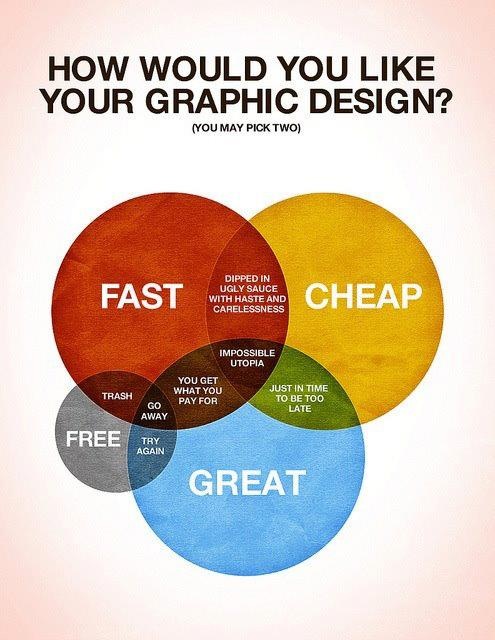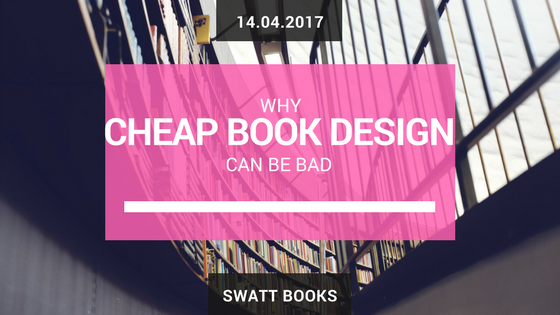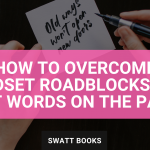In this post we’re going to explore the most common reasons for cheap book design, and why those reasons can be bad for your book.
There are four main reasons for cheap book design:
- The book has been designed out of context
- The design has been rushed
- The designer lacks education or experience, or
- The work is not original
Lets explore each of these points in more detail.
1. Context
Good book design needs to have context in order to have meaning. It has to relate to your story and your audience in order to be effective. For that, the designer needs time to research your audience and understand your story or subject your are writing about in order to be able to make design decisions that are relevant to you. Without that research and understanding, the designer will be working in a vacuum. You may end up with a design that looks pretty, but it won’t have any relevance to you beyond the superficial.
This also applies to purchased templates. By their very nature, stock templates have been designed to be as generic as possible in order to appeal to the widest market. They can have their place in the design process if there are unavoidable time or budget constraints; however for them to be effective, they need to be altered to suit your needs first.
2. Time
We’ve all heard the phrase “Time is Money”, and that holds true for book design as well. Good design takes time. A designer needs time to research, brainstorm, generate ideas, and then refine those ideas into concepts; and that is all before you even see a single proof. After that comes typesetting and amendment time. If a designer quotes really cheaply or you negotiate down design costs too much, more then likely the designer A) will not be able to allocate enough time to do a good job without making a loss; or B) may cut corners and miss out key design phases to stay on budget. The result is a design that at best looks good with no meaning, or worse is inappropriate for what you need, is irrelevant to your book, or just plain ugly.
There is a great infographic that I found years ago that illustrates this point perfectly.

3. Education & Experience
It’s a concept that we’re all familiar with; the more education and experience you have, the more money you earn. That is doubly true for service-based industries such as design where there isn’t a physical product to sell. For designers our time and our skill IS what we sell, and that skill takes time to learn and years of experience to hone and perfect.
I am not saying that you should not employ the services of an inexperienced designer; how else are they going to get experience. What I am saying is to weigh the decision to utilise a less experienced designer against the complexity of the design you need. Would a less experienced designer be able to produce what you want at the quality of book you need?
4. Originality
We have already discussed the pitfalls of using purchased templates without adaptation to suit your needs, but there is also the very unpleasant topic of plagiarism, which sadly is all too common in our digital age.
Stolen designs are not only bad for your book for all of the reasons previously mentioned, but it is also downright illegal! As a client, you can run the risk of also being held liable if the IP copyright of a design you have commissioned is challenged. So beware of any designer who cannot or refuses to show you progression work for a design. If you are only presented with polished design concepts (which is a common practice in cover design), you are fully within your right to ask to see sketches or development work for your chosen concept.
Conclusion
There may very well be the utopian designer out there who produces excellent, bespoke design work for next to nothing simply for the love of design. But while you scour the earth looking for them, here are some suggestions on how to avoid the pitfalls of cheap book design without breaking the bank:
- Give your designer as much time as possible to complete a project. Even consider engaging with a designer during the final stages of manuscript editing. A good designer will be able to advise you on ways to approach and manage your book design during the early stages that could save you money in the long run.
- Think about your design requirements in regards to their importance to your saleability of your book. Could the quality of the design mean the difference between making a sale or not? If so, then you should value it accordingly. If not, then it may not require as expensive a solution to meet your needs and something more basic may be sufficient (as long as it is still of a quality and relevance to your audience).
- Consider the complexity of your book requirements. Does it just need a bit of tidying up? In which case, a more junior/inexperienced designer may be a cost effective option. However, if it is more complex in nature requiring a more technical design approach and a deeper understanding of book production then it is cheaper in the long run to pay more for a designer with years of experience – you don’t want to have to pay extra for it be fixed, or worse completely redesigned, in order to meet your goals.
- Lastly, if the money just isn’t there to buy the level of service that you need, explore the option of an exchange of services. After all, designers are business people too (though many hate to admit it), and their companies need things just like any other. Maybe you can offer ghost writing of blog posts for them, or review their website copy? You get what you need without devaluing the services of the designer.
Do you have any money saving design tips, or have ideas on making design more cost effective? Just let me know in the comments section; I’d love to hear from you.





